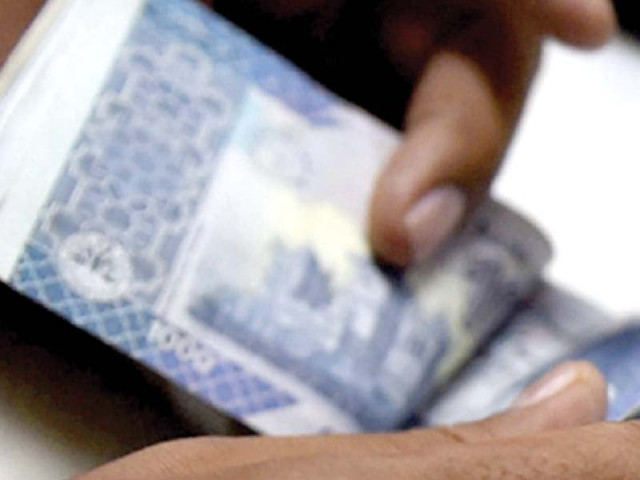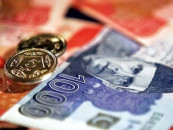Rupee hits new low as importers rush to buy dollars
Closes at 169.11 in inter-bank, 170.6 in open market

Pakistani currency hit an all-time intra-day low of Rs169.7 against the US dollar in the inter-bank market on Wednesday, but partially recovered to close at Rs169.11 after the central bank apparently intervened by supplying foreign currency to the market to defend the rupee.
The speculative and panic buying of dollars by importers in the inter-bank market jolted the open market as well where the local currency breached the Rs170 mark and stood at Rs170.6 at the end of the day, according to forex.com.pk.
Following a fresh drop of Rs0.17 in the inter-bank market, the rupee has declined by a cumulative 7.34% (or Rs11.57) from its opening level of Rs157.54 on the first day of current fiscal year, ie July 1, 2021.
The rupee has maintained its downturn since hitting the 22-month high of Rs152.27 in May 2021, losing a cumulative 11% (or Rs16.84) over the past four months.
The central bank was sent a query to know whether it intervened in the market on Wednesday or not, but it did not respond till late in the evening.
Earlier, the State Bank of Pakistan injected $1.2 billion into the inter-bank market to defend the rupee in the ongoing fiscal year 2021-22 and has pumped a total of $5.8 billion since the Pakistan Tehreek-e-Insaf (PTI) government came to power in August 2018.
“The rupee has overshot expectation,” Pak-Kuwait Investment Company Head of Research Samiullah Tariq said while talking to The Express Tribune.
With the latest depreciation, the real effective exchange rate (REER) - the country’s cost of trade with the world - has improved to 97 points compared to over 102 points a couple of months ago. The balanced level for REER is 100.
“The improvement in REER suggests that the rupee has bottomed out at the current level. If it maintains the downturn over the next couple of days, the decline will be temporary,” he said.
The rupee depreciation came in the wake of an uptrend in commodity prices in the world market, which requires higher dollar payments as Pakistan relies heavily on the import of raw material, food items, plant and machinery to run the national economy.
For instance, the prices of liquefied natural gas (LNG), crude oil, coal, steel and edible oil have shot up around the globe, he said.
Earlier, the tumultuous political situation in Afghanistan caused the decline in rupee’s value as the Taliban government was in need of dollars to run the economy while the US denied them access to Afghanistan’s foreign exchange reserves of $10 billion, he said.
“The rupee should recover ground against the greenback if the government has not made any commitment to the International Monetary Fund (IMF) to let the currency depreciate,” said Exchange Companies Association of Pakistan’s former secretary general Zafar Paracha.
The rupee value had been higher in the open market compared to its parity in the inter-bank market before the fall of Kabul to the Taliban a month ago. “Now, the rupee is weak in the open market as compared to inter-bank,” he said.
A spike in the country’s import bill and trade deficit to record highs coupled with soaring inflation also contributed to the depreciation of the rupee, he said.
Published in The Express Tribune, September 16th, 2021.
Like Business on Facebook, follow @TribuneBiz on Twitter to stay informed and join in the conversation.



















COMMENTS
Comments are moderated and generally will be posted if they are on-topic and not abusive.
For more information, please see our Comments FAQ